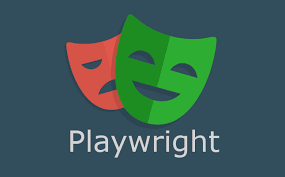Playwright Automation Training

Introduction to Playwright
- Overview of end-to-end testing
- Introduction to Playwright
- Architecture of Playwright
- Playwright vs Selenium
- Features and capabilities of Playwright
- Installing Playwright (Node.js and Playwright setup)
- Playwright CLI and IDE overview
Exercises:
- Install Playwright and set up the development environment
- Write a simple script to open a browser and navigate to a webpage
Typescript:
- Variables
- Conditional Statements
- Loops
- Arrays
- Functions
- Creating classes
- String functions
- Enums
Core Concepts and Basic Usage
- Browsers and contexts
- Pages and frames
- ID
- GetByRole()
- GetByText()
- Xpath
- CssSelector
- Basic actions (click, fill, type, etc.)
- Assertions and Validations
Exercises:
- Create a script to interact with different elements on a webpage
- Use various types of selectors to locate elements
- Implement basic assertions to validate page content
Advanced Interactions
- Handling forms and input fields
- File uploads and downloads
- Handling Alerts, Frames, and Windows
- Mouse and keyboard interactions
Actions:
- Double click
- Right click
- Window scroll
- Focus on element
- Capturing screenshots and videos
Exercises:
- Automate a form submission process
- Handle file uploads and verify the upload
- Manage multiple browser windows and frames
- Capture screenshots and video recordings of tests
Annotations
Debugging test cases
Reading Data from Excel
Network Interception and Mocking
- Intercepting network requests and responses
- Mocking API responses
- Handling authentication (Basic, Token-based)
- Network throttling and offline mode
Exercises:
- Intercept and modify network requests
- Mock API responses to test different scenarios
- Automate login processes using various authentication methods
- Simulate network conditions and test application behaviour
Test Automation Framework
- Structuring Test Suites and Test Cases
- Page Object Model (POM)
- Writing reusable functions and components
- Data-Driven Testing with Parameterization
- Running tests in parallel
Exercises:
- Organise tests into suites and cases
- Implement Page Object Model for a sample application
- Write reusable helper functions
- Create data-driven tests using different data sets
- Configure and run tests in parallel
Continuous Integration and Deployment
- Integrating Playwright with CI/CD tools (Jenkins, GitHub Actions, GitLab CI)
- Running tests in Headless Mode
- Generating Test Reports (Allure, HTML)
- Debugging failed tests
Exercises:
- Set up a CI/CD pipeline to run Playwright tests
- Configure tests to run in headless mode
- Generate and customise test reports
- Debug and fix failing tests in the CI environment
Cross-Browser and Mobile Testing
- Running tests on different browsers (Chromium, Firefox, WebKit)
- Emulating mobile devices and network conditions
- Testing responsiveness and mobile-specific features
- Using BrowserStack or Sauce Labs for Cross-Browser testing
Exercises:
- Execute tests across different browsers
- Emulate mobile devices and run tests
- Verify responsiveness of web applications
- Integrate with BrowserStack or Sauce Labs for broader testing coverage
Playwright Plugins and Customization
- Using Playwright test runner
- Integrating third-party plugins
- Custom reporters and test hooks
- Extending Playwright with custom functions
Exercises:
- Set up and use Playwright test runner
- Integrate and use a Playwright plugin
- Create custom test hooks and reporters
- Develop and use custom functions in Playwright scripts
Playwright Interview Questions.

